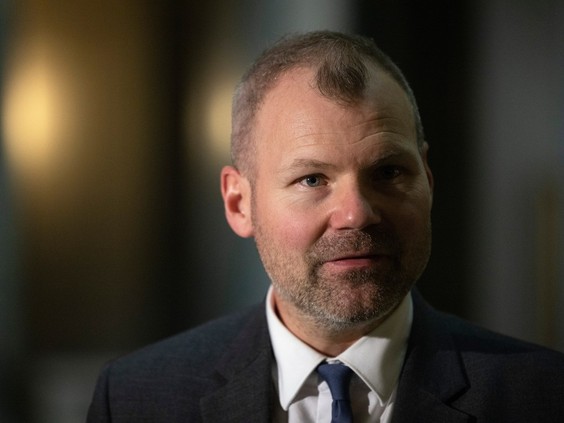
Minister for SaskPower Dustin Duncan says the federal targets are “unaffordable, unconstitutional, technologically and logistically unattainable.”
Larissa Kurz, Regina Leader-Post
Saskatchewan is asking Ottawa to hold off on implementing new clean energy regulations in favour of a provincial plan with an extended timeline to reach net-zero emissions.
Introduced in draft form this August, the federal Clean Energy Regulation (CER) applies to all electricity generators that use fossil fuels, with a plan to limit allowed emissions to an annual average of 30 tonnes of carbon per gigawatt hours a year.
Federally set targets call for a phaseout of coal by 2030, and achieving a net-zero electrical grid by 2035.
Also included are requirements for registration, reporting and record-keeping to the federal Ministry of Environment and Natural Resources.
Dustin Duncan, provincial minister responsible for SaskPower, says the federal framework constitutes another jurisdictional overreach by the federal government, setting “unattainable” goals for the province to meet.
In a letter sent to federal Minister of Environment and Climate Change Steven Guillebeault on Nov. 2, responding to the new regulations, he asks for Ottawa to “acknowledge and accept” Saskatchewan’s provincial plan to reach net-zero generation by 2050 instead of CER’s timeline.
In a press conference held Tuesday, Duncan explained the province isn’t against the idea of clean energy, but rather the implementation plan.
“We’re not disagreeing with net-zero, it’s really just the timelines,” he said.
“We don’t see a path forward in how we can do that.”
Duncan says the regulations will “jeopardize the reliability of Saskatchewan’s power grid” and increase rates to unaffordable levels, with estimates showing an increase of more than double for the average household.
“This presents an additional cost stacked on top of other federal taxes and regulations, such as the carbon tax,” Duncan wrote.
“Our government will not risk the affordability and reliability of Saskatchewan’s power grid to attempt the impossible based on arbitrary federal emissions targets and timelines.”
Alberta, New Brunswick, Nova Scotia and Manitoba have also said the targets are not feasible, Duncan pointed out.
Saskatchewan is looking for “a significant rewrite to the regulations, rather than just some tweaks,” said Duncan.
“This is fundamentally flawed, from Saskatchewan’s perspective,” he said.
SaskPower estimates meeting CER requirements will cost $40 billion over the next twelve years to take on significant expansion, replacement and rebuilding on the current capacity of the provincial grid, and to expand transmission infrastructure.
Duncan said there is no “alternative, reliable” baseload source that is also non-emitting, to replace coal and gas units in the interim.
He called Saskatchewan’s timeline more “sensible” to make the needed changes to meet incoming emission standards, while maintaining service deliverability to Saskatchewan households.
Small modular reactors are only in pre-development, with $72 million in federal funds received in August to advance the tech, and Saskatchewan signing a renewed agreement with Ontario this week with a provision to decide on committing to a first reactor by 2029.
SaskPower president and CEO Rupen Pandya said it’s not likely SMRs can be delivered any earlier, as neither the technology nor the regulatory go-aheads will be available until the early 2030s.
Long-term storage is not sufficient, and other provinces are likely not able to continue power-sharing agreements, he added.
Manitoba has indicated intentions to pull back 290 megawatts of power currently funnelled to Saskatchewan by the mid-2030s, said Pandya.
“We cannot deploy technology we don’t know works,” Duncan added, pointing to a lack of carbon capture technology for natural gas.
Natural gas accounts for 40 per cent of the total 5,400 megawatts currently available, and coal accounts for 25 per cent, according to SaskPower this spring.
Further, the federal timeline “significantly constrains” investment now into future plants, said Duncan.
“If we commissioned, for example, in 2027 or 2028 a brand new 350-megawatt natural gas plant, we could not run that unabated beyond 2035,” he said.
“We’re essentially making a billion dollar decision on an asset we could only run for seven or eight years, which means we wouldn’t make that decision.”
Duncan said it would “go a long ways” for Saskatchewan to have commitment from federal officials to speed up SMR approval timelines, and provide 75 per cent of the cost of the first SMR in funding.
Asked what he would do should Ottawa stand behind 2035 targets, Duncan a refusal to follow the requirements could “potentially” be considered.
“If it’s a question of following the CER or making sure that people have lights and heat in the winter in 2035, we will make that decision.”
— with files from Alec Salloum

